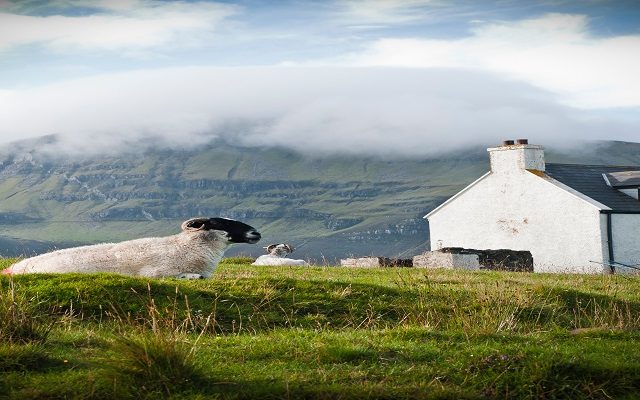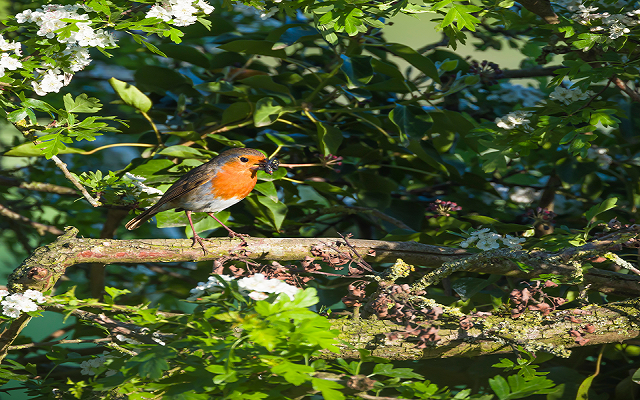Land Business Update | Week Commencing 7th March
Welcome to our update on key land management, farming, planning and energy issues.
ENVIRONMENT
3.6 billion people already live in areas highly vulnerable to climate change
The latest report by the Intergovernmental Panel on Climate Change (IPCC) highlights the devastating impacts that climate change is already having on people across the world. Almost half of the world’s population already live in areas highly vulnerable to heatwaves, droughts, floods. The IPCC warns that there is a “brief and rapidly closing” window to avoid warming above the 1.5 degrees Paris Agreement target, which would mean a magnitude greater harm and limits to adaptation measures. UN secretary-general António Guterres said that the findings were an “atlas of human suffering and a damning indictment of failed climate leadership. I have seen many scientific reports in my time, but nothing like this.”
Soil Association criticises lack of action on ammonia pollution
The Soil Association (SA) has drawn attention to the government missing its legally-binding target to reduce ammonia emissions by 8% by 2020. Between 2013 and 2017, ammonia emissions actually increased. Ammonia has significant impacts on human health as well as wildlife and the natural environment. A group of organisations including the Woodland Trust, WWF, Plantlife International and ClientEarth are calling for tighter restrictions to be set.
Government grants authorisation to use banned neonicotinoid treatment on sugar beet
An emergency temporary authorisation for the use of the neonicotinoid seed treatment on sugar beet crops has been issued in England, due to the high risk yellow virus poses to crops this year. Many organisations have criticised the authorisation, saying that it does not follow scientific advice provided to the government and that British Sugar is not doing enough to develop alternatives.
FARMING
Animal Health and Welfare Pathway to open in 2022
This scheme, which is part of the Sustainable Farming Incentive, will fully-fund vet visits for cattle, sheep and pig farmers if they meet the eligibility criteria. Some capital grants will also become available towards the end of the year for items such as new livestock housing, building upgrades etc. Other funding will become available from 2023 onwards, such as a programme to provide financial support to farmers to prevent and reduce diseases and conditions, and payment-by-results for those demonstrating high animal health and welfare standard practices.
Health and safety on the farm – cattle and walkers
A recent tragic case where an elderly dog walker was trampled by cows has highlight the risks of what can happen on farmland. Two of the most common factors in trampling incidents involve walkers with dogs, and cattle with calves. There is good advice available from the HSE and other sources. General advice for land managers with grazing livestock is below:
- Animal behaviour should be reviewed regularly. Any aggressive animals should be isolated and potentially removed from the herd. Animal behaviour can change under stress conditions, such as when the weather changes or if an animal is injured or ill.
- Where feasible, it may be best to avoid grazing livestock in publically accessible areas altogether, particularly when cattle are calving or have calves at foot.
- Regularly check fencing and gates (at least daily) and consider whether additional temporary fencing is required.
- Consider providing a temporary alternative footpath route and ideally agree it in advance with your local council.
- Consider putting up signs advising of the presence of the animals, particularly at field entrances. However, avoid signs which could be seen as preventing the public from exercising their rights of access (see information from the NFU on signs).
Scotland to fund more carbon audits through Track One of the National Test Programme
The Scottish Government is providing £51m to fund more land managers to do carbon audits, from this spring, which is good news. Over 3,000 have already been done. Our Scottish farm management team has carried out audits for farms and estates and found that the discussions that they stimulate are very useful – in terms of cutting emissions but also identifying areas to improve efficiency. Please contact Mary Munro.
Which field margins are good for wild bees?
A GWCT study has found that more solitary bees were found in cultivated margins (cultivated and then left unsown for plants to colonise) while more bumblebees were found in flower-enhanced grass margins (sown (or naturally regenerated) with a mixture of grasses and wildflowers). So the answer is providing both types benefits wild pollinators the most. NB For flower-enhanced margins, a broader range of flower species benefits a greater number of bee species. NB For cultivated margins, some plants that are attractive to pollinators should be tolerated in the margin – such as spear thistle and cow parsley!
Digital solutions for sustainable agriculture
The University of Reading is carrying out a survey of farmers’ awareness of digital solutions for sustainable agriculture. It is part of a European research project which is developing tools for large-scale monitoring of farm environmental management activities. The survey takes about 15 minutes to complete online and is available here.
FORESTRY
Future Woodlands Scotland
Land managers in Scotland can apply to the Future Woodlands Fund, which now has four options:
- Annual payments – of £175/hectare for 20 years (for planting schemes of 5-100 ha).
- Carbon ownership – where the owner keeps and can sell any carbon credits generated. This is different to the previous scheme (for planting schemes of 3-100 ha).
- Upfront area payments – of up to £3,500 per hectare paid in two stages (for planting schemes of 3-5 ha).
- Ghost woodlands – to restore ‘ghost’ or derelict woodlands of high ecological value, with the land manager owning the carbon sequestered by natural regeneration of the woodland (for planting schemes of 3-5 ha).
John Clegg & Co, our forestry arm, can design the scheme for you, funded by the scheme, and then undertake the planting that has been funded.
PROPERTY
Lost Rights of Way deadline removed
The Countryside and Rights of Way Act 2000 included a deadline of 2026 by which the public could register historic rights of way that do not appear on definitive maps. Defra intends to remove the deadline, which has already been done in Wales in 2018, which would mean that the opportunity to register lost rights of ways would be open indefinitely. So far, 41,000 miles of paths have been registered. The government is also considering giving landowners the right to divert or extinguish rights of way in some circumstances.






